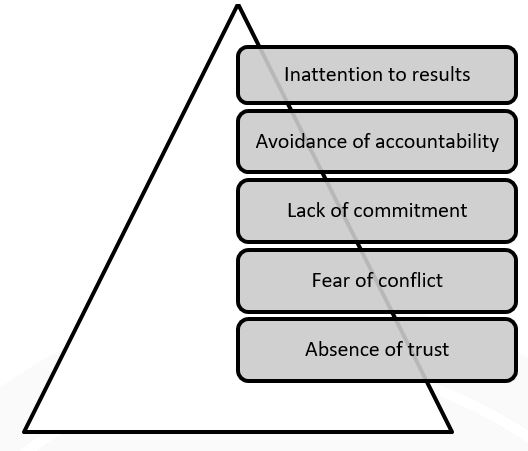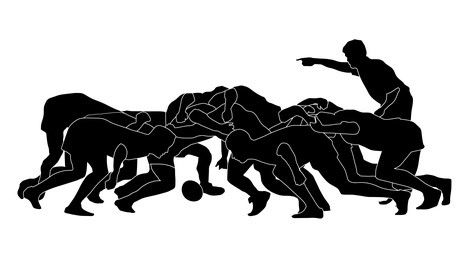Agile Team
The agile team is a self-organized and multidiscipline team created by the Product Owner, ScrumMaster, developers, analysts, and testers. Representants of operation might be part of the team as well (see DevOps).
The goal of the team is to deliver a functional increment of the product on time, with an agreed scope and quality according to requirements selected by the customer for a particular iteration.
The scope of the iteration is specified by the product owner during the sprint. The team is responsible for the definition of tasks necessary for successful implementation. The quality of the result is defined by the Definition of Done and sprint goals.
Background of an agile team
Motivation
- The team is the most productive if it is self-organized.
- Team members take their commitment as a real commitment.
- Push leads to lower quality.
- People do their job the best way they can.
Performance
- The work is done great only if team members are not interrupted.
- Teams are improving if they can solve their problems.
- Personal communication is the best way of collaboration.
Team
- A great team is the most productive up to 10 people.
- A great team produces much more than the sum of people who create them.
- The team should be stable.
- The team looks for substitutability.
The agile team feels responsible for:
- Delivery of promises given for the sprint.
- Quality of the implementation delivered on time.
- Continuous improvement of development practices and standards.
- An Early indication of risks and problems.
- Coordination of work with other teams.
- Test of the results.
- The team is actively improving the development process.
- The team provides information transparently.
- The team plans sprints and break down requirements.
- The team estimates the time necessary for the development and assure to commit only to what will be possible to finish in the sprint.
- The team helps specify acceptance criteria.
- Teams help prepare the next sprint together with the product owner.
- The team presents the sprint results.
What Agile team needs
- Be multidiscipline. The team needs all roles necessary for the successful delivery of the working product.
- The team needs to sit together. Communication within the team is very intensive and the team, therefore, prefers personal communication.
- The team needs electronic tools to simplify collaboration in case of a distributed team.
- The team needs to be protected by ScrumMaster and product owner. The first one protects the team from interruptions, the second one from changes during the sprint.
- The team needs to work on one project, the product exactly.
Typical mistakes of agile teams:
- Team members are pulling only work in their domain based on their knowledge. They do not have the courage to start to work on anything else. Because of that their knowledge sharing is limited.
- Team members work on tasks that were not approved by the product owner.
- Kanban board is not updated. Team members are not synchronized.
- The team is not willing to improve. Team members think it is someone’s else problem.
- Standup is only about reporting. I did, I’ll do. Not results-oriented. Not goal-oriented.
- Missing reflection of the team. The problems are always outside of the team, not within.
- The team is passive.
The Five Dysfunctions of Team
Before you start with agile practices, you have to be self-reflective. The team must be at some minimum stage before agile is introduced. Otherwise, you will not see any benefits as the team needs to solve some other, more fundamental, problems earlier.

The Five Dysfunctions of team by Patrick Lencioni
Values of an agile team
When you enter a team room of a really agile team, you will realize a different culture. Agile teams appreciate values that aren’t very different from the values of great teams. Even non-agile. But what is different, it is constant interest to collaborate according to them. It is a constant interest in other colleagues. Because Agile is not about the way of doing, it is the way of thinking.

- Commitment, the team feels responsible to deliver what they committed to.
- Openness, team members will openly issue problems and discuss solutions.
- Courage to say unpleasant things.
- Goal-oriented. The team knows why it exists, what team members imagine by the word ‘team’.
- Respect for each team member. We all have our history, experience, problems, and personal life.

